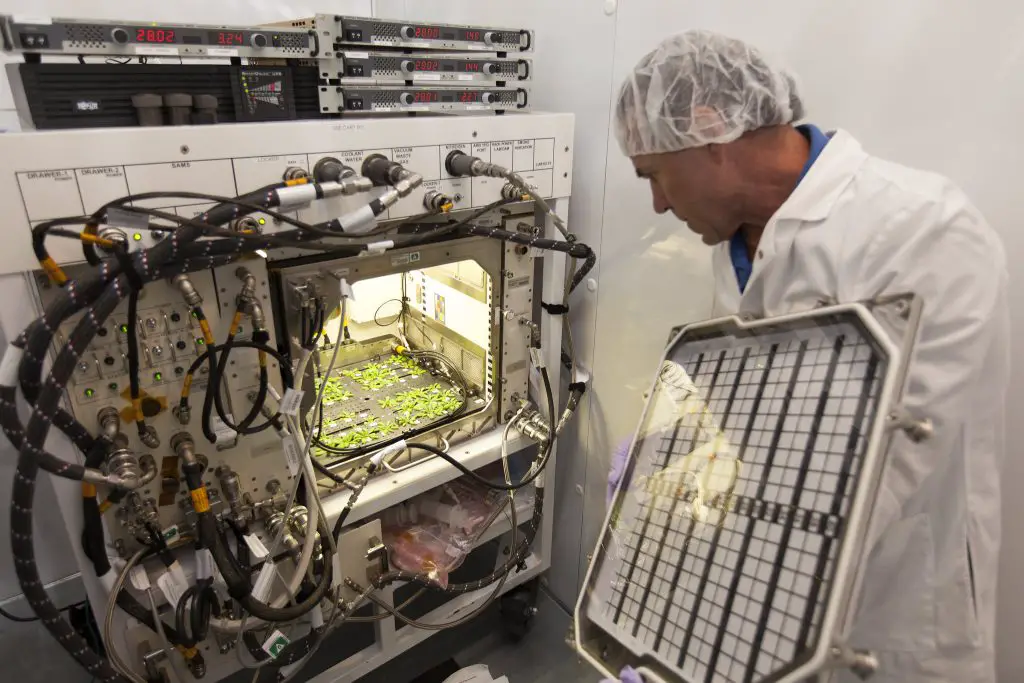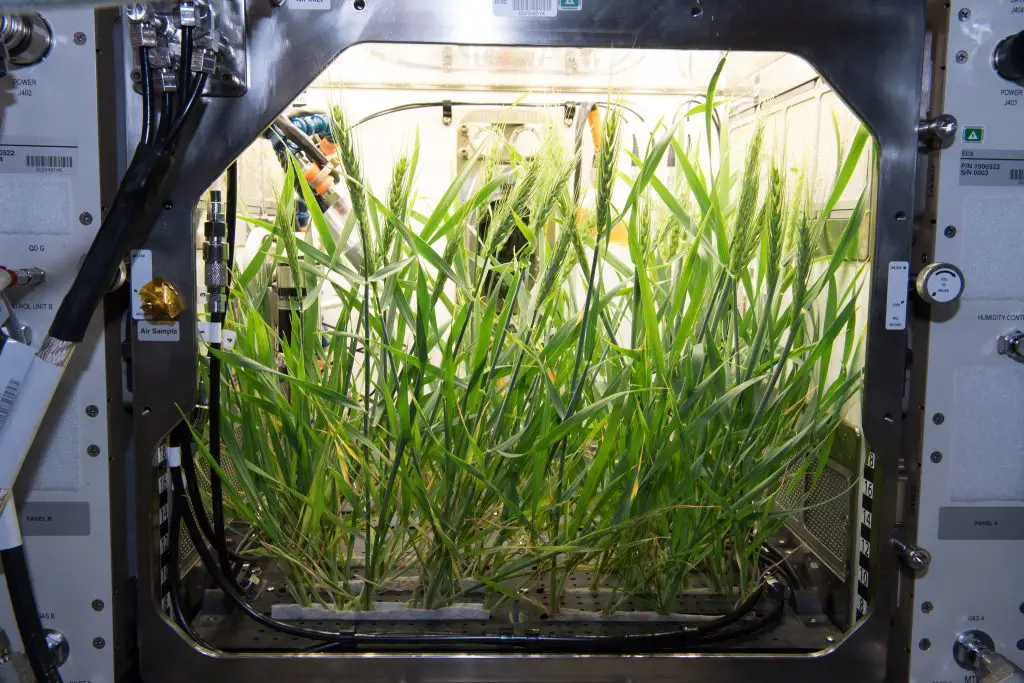Plants grow toward light due to phototropism, a process where light affects the growth of the plant.

Credit: www.thesill.com
Introduction To Phototropism
Phototropism is a fascinating phenomenon that governs how plants respond to light. This natural process allows plants to grow toward or away from light sources, ensuring they can optimize their exposure to sunlight for photosynthesis. Understanding phototropism is crucial not only for botanists and researchers but also for gardeners and plant enthusiasts who want to help their green friends thrive.
In this section, we will delve into the explanation of what phototropism is and provide a broad overview of how plants respond to light.
Explanation Of What Phototropism Is:
- Phototropism is a tropism, which refers to the growth or movement of an organism in response to an external stimulus. In the case of plants, this stimulus is light.
- More specifically, phototropism refers to the directional growth of plants in response to light. It can be observed when plants grow toward a light source, known as positive phototropism, or away from a light source, known as negative phototropism.
- The main driver behind phototropism is the hormone auxin. Auxin is produced in the shoot tips of plants and helps control their growth and development. When light is detected by specialized pigments in the plant cells, auxin distribution is affected, leading to differential cell elongation and the bending of plant stems or roots.
Broad Overview Of How Plants Respond To Light:
- Plants have various photoreceptors that allow them to sense and respond to different wavelengths of light. These photoreceptors include phytochromes, which are sensitive to red and far-red light, and phototropins, which respond to blue light.
- When plants receive light signals, they undergo a series of biochemical and physiological changes to adjust their growth patterns. These changes involve the redistribution of auxin, as well as alterations in cell expansion and division rates.
- Positive phototropism occurs when light is detected on one side of the plant, causing the cells on that side to elongate more rapidly than the cells on the shaded side. This uneven growth results in the plant bending toward the light source.
- Negative phototropism, on the other hand, occurs when light is excessively bright or damaging. In this case, the plant will grow away from the light source to protect itself.
Understanding phototropism not only unveils the intricacies of plant growth but also offers insights into how plants interact with their environment. By harnessing this knowledge, we can better care for our plants and create optimal growing conditions. So, let’s dive deeper into the fascinating world of phototropism and unravel the mechanisms that propel plants to bend and sway with the sun.
Positive Phototropism: Plants Growing Toward Light
Plants have a remarkable ability to perceive and respond to light stimuli, ensuring their growth and survival. Positive phototropism is an essential process that allows plants to grow towards sources of light. In this section, we will explore how plants perceive and respond to light stimuli, the role of photoreceptors in directing plant growth, and the significance of phototropin in positive phototropism.
How Plants Perceive And Respond To Light Stimuli
- Plants possess a remarkable sensory system that enables them to perceive and respond to light stimuli.
- Specialized cells called photoreceptors located in the plant’s stems and leaves are responsible for detecting light.
- Photoreceptors are able to capture specific wavelengths of light and initiate a chain of biochemical reactions within the plant.
Role Of Photoreceptors In Directing Plant Growth
- Photoreceptors play a crucial role in directing plant growth by sensing and interpreting light cues.
- The two main types of photoreceptors involved in phototropism are phytochromes and phototropins.
- Phytochromes primarily detect red and far-red light, while phototropins respond to blue and uv-a light.
Phototropin And Its Role In Positive Phototropism
- Phototropin is a key photoreceptor protein responsible for positive phototropism.
- When activated by blue light, phototropins trigger a cascade of signaling events within the plant.
- This signaling pathway leads to the redistribution of the plant hormone auxin, causing cells on the shaded side of the plant to elongate and promote growth towards the light source.
Plants have sophisticated mechanisms to perceive and respond to light stimuli. Photoreceptors, such as phototropins, play a crucial role in positive phototropism, enabling plants to grow towards sources of light. This amazing ability ensures that plants can optimize their photosynthesis and maximize their chances of survival in varying light conditions.
Mechanism Of Positive Phototropism
Plants have a remarkable ability to grow and bend toward light, a phenomenon known as positive phototropism. But what exactly causes this bending and what mechanisms are at play? In this section, we will delve into the fascinating world of plant biology and explore the mechanism of positive phototropism.
How Plants Bend Toward Light
- Plants have a hormone called auxin that plays a crucial role in their growth and bending toward light.
- When a plant is exposed to light from one direction, it triggers a series of physiological responses that ultimately lead to the bending of the plant towards the light source.
- The bending is not immediate but occurs gradually over time as the plant grows, allowing it to optimize its light absorption.
Role Of Auxin In Plant Growth And Bending
- Auxin is primarily responsible for regulating the elongation of plant cells, allowing them to grow and bend.
- Auxin is produced in the shoot tips and transported downwards through the stem towards the plant’s base.
- In the presence of light, auxin accumulates on the side of the stem that is away from the light source.
- This difference in auxin concentration between the shaded and illuminated sides of the stem leads to cell elongation on the shaded side, causing the stem to curve towards the light.
The mechanism of positive phototropism revolves around the role of auxin in plant growth and bending. It is fascinating to witness how plants effortlessly bend and reach towards the light, ensuring their survival and maximizing their potential for photosynthesis.
Factors Influencing Positive Phototropism
Plants have an amazing ability to respond to light by growing towards it, a phenomenon known as positive phototropism. This fascinating behavior is governed by a combination of factors that influence the plant’s growth pattern. In this section, we will explore the factors that contribute to positive phototropism, shedding light on the role of light intensity, the impact of light directionality, and the influence of plant hormones.
Understanding these factors will allow us to appreciate the intricate mechanisms behind the growth of plants in response to light.
Role Of Light Intensity On Plant Growth:
- The intensity of light plays a crucial role in determining the direction of plant growth.
- Higher light intensity on one side of the plant triggers the elongation of cells on that side, causing the plant to bend towards the light source.
- The differential growth response is due to the hormone auxin, which accumulates on the shaded side and stimulates cell growth in the opposite direction.
The Impact Of Light Directionality:
- The direction from which light strikes the plant also affects its growth pattern.
- When light comes from above, plants exhibit positive phototropism by growing towards the light.
- In contrast, when light is blocked from above and only comes from the side, plants demonstrate negative phototropism, growing away from the light source.
How Plant Hormones Influence Phototropism:
- Plant hormones, specifically auxins, play a vital role in regulating phototropism.
- Auxins are produced in the shoot tips and are responsible for initiating growth in response to light.
- When light is received by photoreceptors in the plant cells, it triggers the movement of auxins to the shaded side.
- The accumulation of auxins on the shaded side stimulates cell elongation, causing the plant to bend towards the light.
By understanding the role of light intensity, the impact of light directionality, and the influence of plant hormones, we gain insights into the remarkable mechanisms that govern the growth of plants towards and away from light. These factors work together to ensure that plants are able to optimize their exposure to light, enabling them to carry out essential processes such as photosynthesis effectively.
Negative Phototropism: Plants Growing Away From Light
Explanation Of Why Some Plants Grow Away From Light
Plants are remarkable organisms that have adapted various strategies to survive and ensure their growth. While positive phototropism directs plants towards light sources for optimal photosynthesis, negative phototropism causes certain plants to grow away from light. Here’s why:
- Hormonal response: Plants respond to light by producing different hormones, with auxins playing a vital role in phototropism. However, in the case of negative phototropism, auxins accumulate on the side opposite to the light source, inhibiting growth and causing the stem to curve or bend away from the light.
- Unequal distribution of auxins: The asymmetrical distribution of auxins is crucial in negative phototropism. This hormone moves away from the illuminated side of the plant and accumulates on the shaded side. As a result, the cells on the shaded side elongate less, causing the stem to bend away from the light source.
- Survival strategy: Negative phototropism is a plant’s mechanism to avoid unfavorable light conditions. By growing away from intense light, plants can prevent excessive exposure, which may lead to damage or even death. This adaptation enables them to find more suitable light conditions for optimal growth and survival.
Role Of Different Plant Hormones In Negative Phototropism
Negative phototropism in plants is influenced by various hormones that regulate growth and responses to light. Here’s how different plant hormones contribute to this phenomenon:
- Auxins: These hormones have a significant impact on negative phototropism. They accumulate on the shaded side of the plant, inhibiting elongation and causing the stem to bend away from the light. Auxins also control other growth processes in plants.
- Gibberellins: Gibberellins are involved in plant growth regulation, including negative phototropism. They work synergistically with auxins to promote stem elongation, which, in the case of negative phototropism, results in bending or curving away from the light source.
- Abscisic acid: While primarily known for its role in stress responses, including drought and seed dormancy, abscisic acid also plays a part in negative phototropism. It helps regulate plant growth and responses to light, working in coordination with other hormones.
The Impact Of Light Intensity And Direction On Negative Phototropism
The intensity and direction of light greatly influence the manifestation of negative phototropism in plants. Consider the following points:
- Light intensity: Plants exhibit more pronounced negative phototropism when exposed to higher light intensities. The greater the intensity, the stronger the auxin accumulation on the shaded side, leading to enhanced bending away from the light source.
- Light direction: The direction from which the light comes determines the asymmetrical distribution of auxins. Plants respond differently based on whether the light is from above, below, or to the side. This determines the bending or curving direction of the stem away from the light.
Negative phototropism is a fascinating adaptive behavior in plants, enabling them to grow away from detrimental light conditions. Through the regulation of hormones like auxins, gibberellins, and abscisic acid, plants can bend and curve their stems away from light sources, optimizing their growth and survival.
The intensity and direction of light further influence the degree of bending observed in plants. Understanding the mechanisms behind negative phototropism allows us to appreciate the remarkable strategies plants employ to thrive in their environments.
Comparison Of Positive And Negative Phototropism
Plants’ ability to grow towards or away from light is an incredible phenomenon that allows them to optimize their growth and survival. This process is known as phototropism, which can be further categorized into positive and negative phototropism. Let’s explore the similarities and differences between these two types of phototropism, as well as the factors that determine the direction of plant growth.
Similarities And Differences Between Positive And Negative Phototropism:
Positive phototropism:
- Key points:
- Plants exhibit positive phototropism when they grow towards a light source.
- Sunlight is the primary source of light for plants to perform photosynthesis, making it crucial for their survival.
- The growth hormone auxin plays a vital role in positive phototropism by moving towards the shaded side of the plant, stimulating cell elongation and bending towards the light.
- This bending response is mainly observed in stems and leaves, as they are more flexible and can easily reorient themselves towards the light.
Negative phototropism:
- Key points:
- In contrast to positive phototropism, negative phototropism occurs when plants grow away from light.
- Roots, unlike stems and leaves, exhibit negative phototropism as they grow in the opposite direction of the light source.
- The hormone auxin also controls negative phototropism in roots, but in this case, it moves away from the light, leading to inhibited growth on the illuminated side.
- By growing away from light, roots can explore the soil more effectively, searching for water and nutrients necessary for the plant’s survival.
Factors That Determine The Direction Of Plant Growth:
- Key points:
- Besides phototropism, several factors influence the direction of plant growth.
- Light intensity: Plants respond differently to varying light intensities, leading to variations in growth patterns.
- Light direction: The angle at which light falls on a plant can influence its growth direction. For example, if the light source is predominantly from one side, the plant may exhibit asymmetrical growth towards that side.
- Gravity: Despite the influence of phototropism, gravity also plays a significant role in determining plant growth. The downward pull of gravity guides roots to grow in a downward direction, while stems grow upward against gravity.
- Environmental cues: Plants can respond to various environmental cues, such as temperature, humidity, and availability of water and nutrients, which may impact their growth direction.
- Plant species: Different plant species exhibit varying degrees of phototropism and may respond differently to light stimuli.
Understanding the complexities of plant growth and the mechanisms behind phototropism provides us with valuable insights into how plants adapt and thrive in their environment. By recognizing the similarities and differences between positive and negative phototropism, as well as the factors influencing plant growth direction, we can better appreciate the remarkable abilities of these living organisms.
Photomorphogenesis: Light’S Influence On Plant Development
Overview Of How Light Affects Overall Plant Development
Plants have a remarkable ability to respond and adapt to their surroundings. One of the most influential factors that shape their growth and development is light. Through a process called photomorphogenesis, plants are able to sense and interpret light signals, which triggers a series of physiological responses.
This intricate dance between plants and light dictates how plants grow, both towards and away from light sources. Whether you’re an avid gardener or simply curious about the wonders of nature, understanding the impact of light on plant development is essential.
Impact Of Phototropism On Other Aspects Of Plant Physiology
Phototropism, the growth of plants in response to light, plays a vital role in various physiological aspects of plant life. Here are some key points to consider:
- Positive phototropism: When plants grow towards a light source, it allows them to maximize their exposure to sunlight, which is crucial for photosynthesis. This process enables plants to convert light energy into chemical energy, powering their growth and development.
- Negative phototropism: On the other hand, certain plant parts exhibit negative phototropism, where they grow away from light. For instance, roots tend to grow away from light to seek out nutrients and water present in the dark soil. This adaptive behavior ensures the plant’s survival by facilitating efficient water and nutrient absorption.
- Leaf orientation and structure: Light also influences how leaves orient themselves to optimize light capture. Leaves may be arranged in a way that minimizes self-shading, ensuring each leaf receives a sufficient amount of sunlight for photosynthesis. Additionally, light intensity and direction can affect the shape and structure of leaves, allowing them to adapt to different environmental conditions.
Importance Of Balanced Light Exposure For Healthy Plant Growth
Just like humans, plants need a balance of sunlight exposure to thrive and maintain optimal health. Here are some key considerations:
- Proper light intensity: While light is essential for plant growth, excessive sunlight can be harmful. High-intensity light can lead to photodamage, causing oxidative stress and tissue damage. It is crucial to provide plants with suitable light levels that support their photosynthetic needs without causing harm.
- Light duration and quality: Besides intensity, the duration and quality of light also impact plant growth. Photoperiod, the length of light and dark periods, influences reproductive processes, flowering, and dormancy in plants. Additionally, the spectral composition of light, including different wavelengths such as red and blue, affects various physiological functions, including stem elongation and leaf formation.
- Light direction and distribution: Light direction and distribution within an environment can greatly influence plant growth. Uneven lighting can lead to uneven growth and development. Ensuring that plants receive uniform light exposure from all sides promotes balanced growth and prevents bending or leaning towards a light source.
By acknowledging the influence of light on plant development, we can better nurture our green companions. From optimizing light intensity to providing suitable durations and distributions, we can create environments that foster healthy and vibrant plant growth. So, let’s harness the power of light and watch our plants flourish!
Frequently Asked Questions For What Causes Plants To Grow Toward And Away From Light
Why Do Plants Grow Toward Light?
Plants grow toward light because they need it for photosynthesis, a process that allows them to convert light energy into chemical energy. This enables plants to produce food and grow. The hormone auxin also plays a role in this growth response, as it accumulates on the shaded side, causing cells to elongate and the plant to bend toward the light.
How Do Plants Sense Light?
Plants sense light through a special pigment called phytochrome. When phytochrome absorbs light, it undergoes a chemical change and sends a signal to the plant. This signal triggers various molecular and cellular processes, such as the movement of auxin, which ultimately leads to growth responses in the direction of the light source.
Why Do Some Plants Grow Away From Light?
Some plants grow away from light to seek a more optimal position for survival. In certain situations, such as a dense canopy or competition for light, plants may elongate their stems and grow in a direction where they will receive more light.
This behavior is an adaptive response that allows plants to maximize their chances of survival and growth.
Conclusion
Understanding how plants respond to light is crucial for gardeners and farmers alike. The phenomenon of phototropism, where plants grow toward or away from light, is a fascinating process driven by hormones and genetic factors. The presence of auxin, a key hormone, plays a significant role in directing plant growth towards light sources.
As the plant senses light, it triggers a cascade of reactions, adjusting growth patterns to optimize energy absorption and photosynthesis. Adequate light exposure is essential for plants to produce food and thrive. However, excessive or imbalanced light can have detrimental effects, leading to photoinhibition or even cell damage.
By providing appropriate lighting conditions, growers can harness the power of phototropism to maximize plant growth and yield. Furthermore, with advances in technology, artificial lighting systems have been developed to simulate natural light and promote a more controlled growth environment.
As we deepen our understanding of phototropism, we can unlock new strategies for cultivating healthy and productive plants in various settings.




